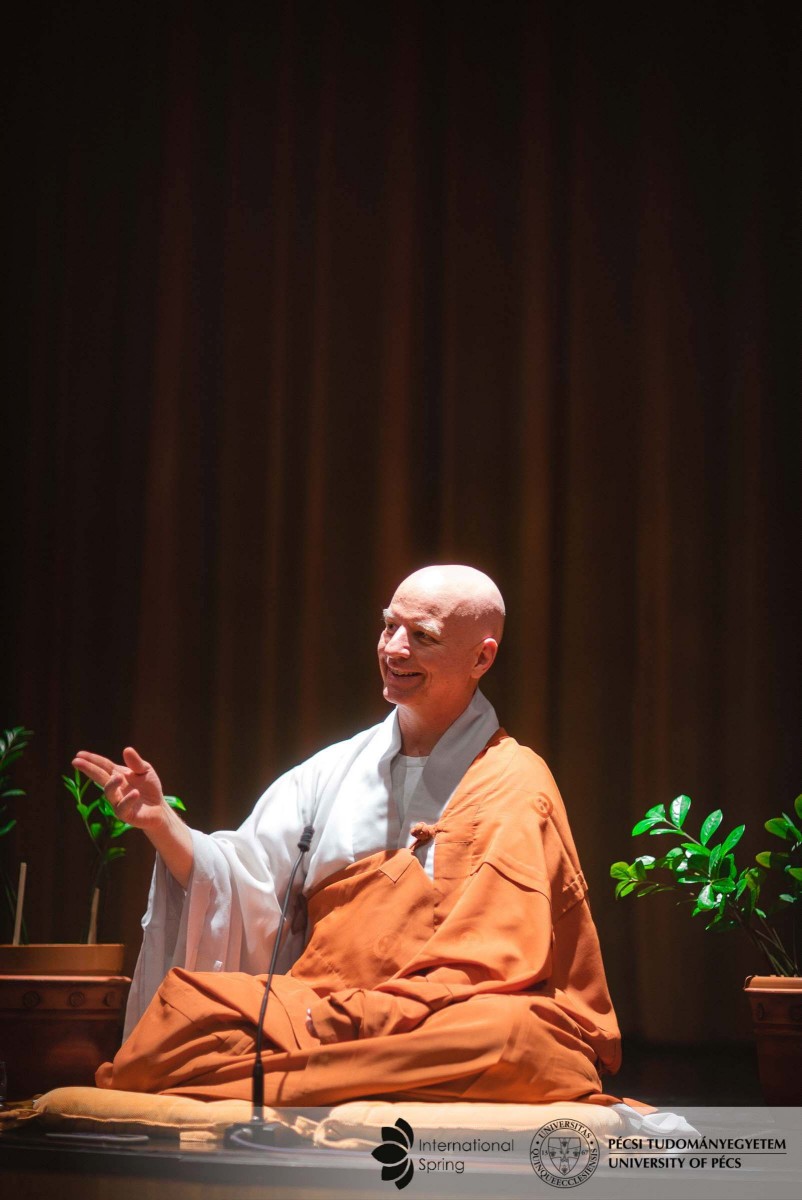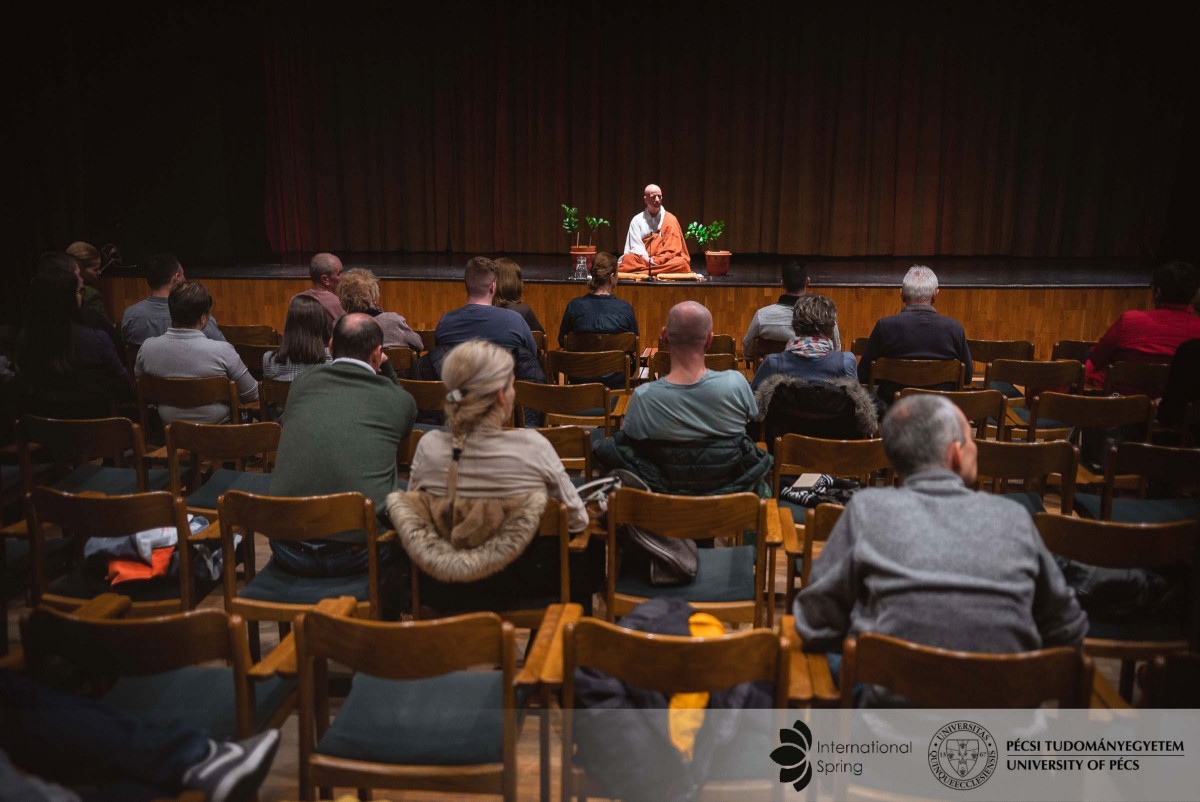The Philosophies of East, West and the Middle Way
2020
Mar
09
East, West and the Middle Way was the title of the lecture by the abbot of the Original Zen Light Temple Chong An Sunim. The programme was part of the International Spring on 3 March at the Faculty of Humanities.
In his lecture, the abbot reflected on the Western and Eastern cultural regions, in between which Hungary is located.
First, the abbot described the idea of Western thinking that follows a geometric pattern. The idea of the cosmos is something like a geometric structure around us. The East does not have that because the Orient has a cyclical notion of time sometimes, even regarding the lifetimes where the areas of spaces are overlapping. The East has a different approach to cosmos and space.

In another abstraction he explained the differences in the sense of a hierarchy: which explains how human groups are formed. Western thinking puts an emphasis on individuality, while in Eastern thinking the group comes first and individual next. The difference is the “I” of the West, and the “We” of the East, as one focuses on finding truth and meaning.
“Until recently if you asked a Japanese person what their job was, he did not say that I am engineer. He said “I work for Sony”
- highlighted the abbot.
Chong An Sunim’s lecture helped to understand the main characteristics and differences between Eastern and Western thinking, which have a great impact on every field of our life.

Written and translated by: Péter Aknai
- Log in to post comments
University of Pécs | Chancellery | IT Directorate | Portal group - 2020.






















